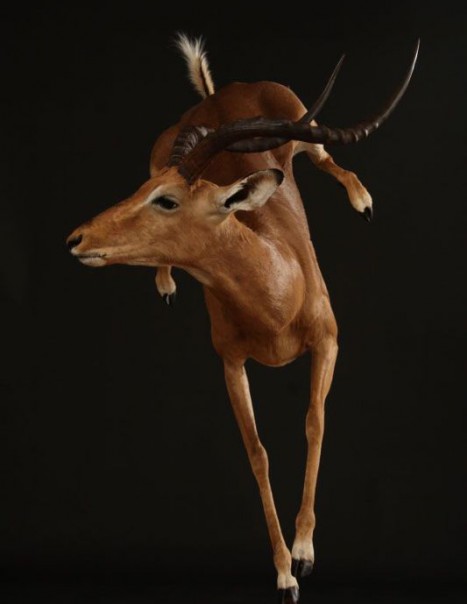Impala – Aepyceros melampus
Impala – Aepyceros melampus
- A. m. epyceros
- A. m. johnstoni
- A. m. katangaei
- A. m. petersi
- A. m. Rendili
- A. mr. suara
The six are very similar but live in different habitats.
The common impala is very abundant in Africa, its population is estimated at about 2 million people, making it one of antelopes, more abundant. It is a ruminant and is therefore herbivore. The feeding of the impala is very simple and boils down to virtually all forms of grass, leaves and even flowers. This power supply has an impact on its teeth, which contains only slightly pointy molars in front.
They are part of the antelope family, and look like kob, gazelles and deer, they typically measure 1.10 m to 1.50 m in length. The male, as the female, is reddish brown on the back and beige on the sides. The belly of the impala even its lips and tail are white. They have unique black lines to each individual at the end of the ears, on the back of the tail and on the forehead. These black lines are very useful for impala since these are signs that allow them to recognize each other. They also have glands secreting odors on hind legs and forehead. These odors also allow individuals to recognize each other. It also has black pads located on the back of its legs.
Male and female impala have a different morphology. Indeed, one can easily distinguish a male by its S-shaped horns that measure 40 to 90 cm long. This is an antelope, athletic and very graceful, known for its speed and agility to pounce. The sound and smell of the impala are complemented by an excellent view. These are excellent runners who can jump impressive distances of over 10 meters in length.
They live in savannas where grass abounds. While they appreciate the proximity to a water source, it is generally not essential as they can be satisfied with the water in the grass they eat. Their environment is only composed of grasses, shrubs and some trees.
Impalas are diurnal animals; so they spend most of the night resting and ruminating and move the day to find new foster spaces. Impalas are animals with a relatively developed social structure.
In a herd include a dominant male and several females with their young and other prepubescent males. During the wet season, the herd will remain whole, while during the dry season, impala scatter as possible. This is due to less feeding during the dry season and the desire of the dominant male.
Males are sexually mature at one year, the females a year and a half. Nevertheless, the males will have no territory before the age of four years and therefore will not be repeated before this age. Mating usually takes place between March and May. Nevertheless, in Equatorial Africa, mating occurs at any time of the year.
Leopard, cheetah, lions, spotted hyenas, wild dogs are their main predators.





